| Exterior | Ground Floor | Kitchens | First Floor | Second Floor | Ladies' Gallery |
| From the hall of the ground floor, a 16th century oak door
provides access to the staircase. The staircase leading to the first floor is
remarkable because it is one of the first straight staircases - or banister on
banister - built in France based on the Italian model. It is covered with a
pitch vault with ribs intersecting at right-angles, the joins are decorated with
keystones, the coffers are decorated with human figures, fruits and flowers
(certain designs were hammered during the Revolution). The staircase with two
banisters is intersected by a landing forming loggia with a balustrade from
which you can discover a view of the Cher. The first floor hall is tiled with small baked clay tiles stamped with a fleur de lys crossed by a dagger. The ceiling has exposed joists. Above the doors, marble medallions, brought from Italy by Catherine de Medici, show Roman emperors. The suite of six 17th century Audenarde tapestries represents hunting scenes according to Van der Meulen's sketches. |
|
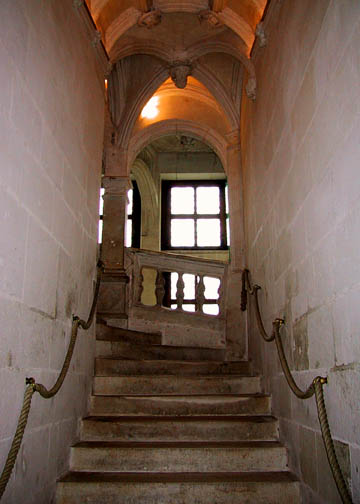 |
 |
| The Five Queens' Bedroom (below left) is thus named in memory of
Catherine de Medici's two daughters and three daughters-in-law. Queen Margot
(wife of Henry IV), Elisabeth of France (wife of Philip II of Spain), her
daughters and Mary Stuart (wife of François II),
Elisabeth of Austria (wife of Charles IX), Louise of Lorraine (wife of Henry
III), her daughters-in-law. The 16th century coffer ceiling displays the Five
Queens' coats-of-arms (click
here to see Mary Stuart's). The chimney is from the
Renaissance period. The walls are covered with a 16th century Flemish tapestry
suite representing the siege of Troy and the kidnapping of Helene, Circus Games
in the Coliseum and the crowning of King David. Another tapestry shows an
episode from the life of Samson. The furniture is made up of a large four poster
bed, two Gothic credence tables topped with the heads of two women in polychrome
wood and a studded travel chest. Catherine de Medici's bedroom (below right) has beautiful 16th century sculpted furniture and is decorated with a series of 16th century Flemish tapestries retracing Samson's life. They are remarkable for their edges filled with animals symbolising proverbs and fables, for example "The Crayfish and the Oyster" or "Skill is greater than Cunning". They chimney and the floor are Renaissance. |
|
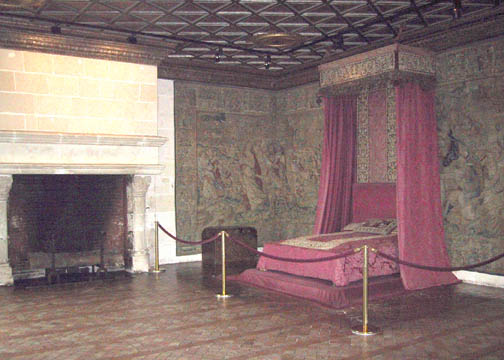 |
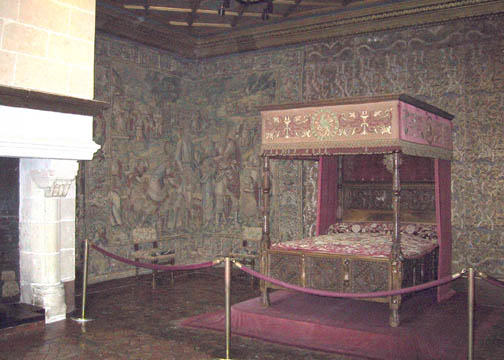 |
| This room (below) reminds us of Cesar of Vendôme, son of King Henry IV and Gabrielles d'Estrées, who became owner of Chenonceau in 1624. The Renaissance chimney was painted in the 19th century with Thomas Bohier's coat-of-arms. The window opening to the West is surrounded by two 17th century wooden Caryatids (below right). The walls are hung with 17th century Brussels tapestries illustrating the ancient myth of Demeter and Persephone. The four-poster bed and the furniture in this room are from the 16th century. Another room in memory of Gabrielles d'Estrées can be found on this floor. | |
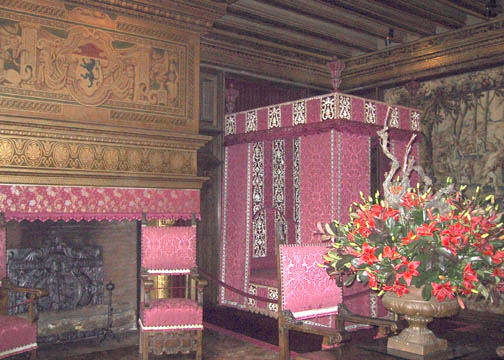 |
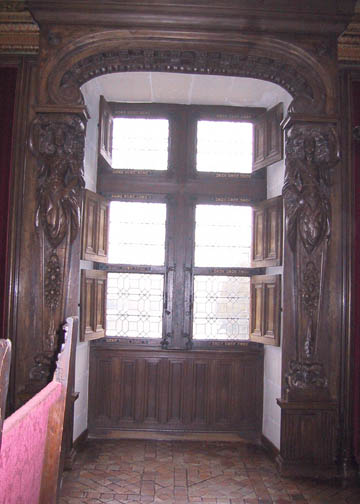 |
| Above Catherine of Medici's hall found on the ground floor, is another hall on the first floor. Take the staircase to continue the visit to the second floor. | |
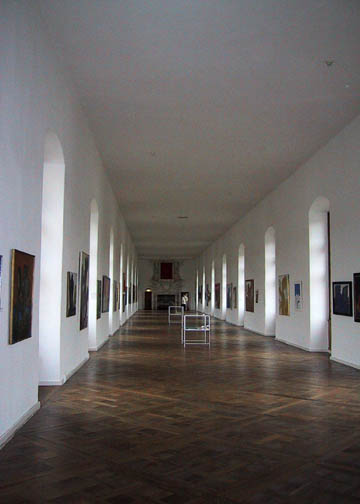 |
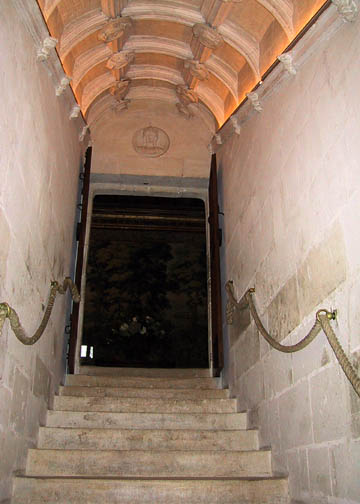 |